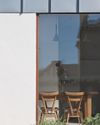
Burleigh is the only pottery in the world that still employs the technique of tissue transfer printing.
The company began trading back in 1851, and its manufacturing methods have remained largely unchanged ever since. It is the last pottery in the world to use underglaze tissue transfer decoration to create its designs. “This technique requires skill that takes apprentice decorators years to master,” says Alison Howell, Burleigh’s design development manager. “Once perfected, though, it achieves results that no other process can replicate.
“Our process starts with a copper roller intricately engraved with a pattern. The roller is loaded onto a printing machine dating from 1953 (a rather modern addition for us!) and primed with ink. This then rotates and prints our patterns onto a continuous stream of fine tissue paper. Our skilled decorators deftly apply this print to a range of ceramic shapes.”
This story is from the {{IssueName}} edition of {{MagazineName}}.
Start your 7-day Magzter GOLD free trial to access thousands of curated premium stories, and 9,000+ magazines and newspapers.
Already a subscriber ? Sign In
This story is from the {{IssueName}} edition of {{MagazineName}}.
Start your 7-day Magzter GOLD free trial to access thousands of curated premium stories, and 9,000+ magazines and newspapers.
Already a subscriber? Sign In

Escape BOATH HOUSE
An inspirational Georgian manor house in the north-east offers sanctuary to artists, poets and the curious of spirit

Escape THE LOOKOUT
Sun-drenched interiors, right on the beach - it's hard to believe this is Scotland

"It still feels like home. Just nicer"
The owners of this house in Edinburgh didn't intend to give it a complete makeover, but once they started they just couldn't stop

A SCOTTISH LOVE STORY
You need passion to persevere through a lengthy restoration project. Thankfully for this rambling old lodge in Highland Perthshire, its new owners were already head over heels

CLEAN AND POLISH
Ten years in the making, this one-time dental surgery in Portobello has been reshaped as an elegant, practical family home

MEET THE MAKER RACHEL MACLELLAN
You might think the process is purely creative, but designing knitted textiles requires a deep understanding of geometry and pattern calculations. It is intricate and often mathematical. I have learned that knitting demands a constant balance between artistry and engineering. Creating a new textile involves not only selecting colours and yarns but also considering the tensile strength, elasticity and drape of the material. That way, I ensure the final product is both aesthetically pleasing and functional. To me, this blend of creativity and technical precision is a fascinating aspect of knitted textile design.

IN THE KITCHEN AT PARTIES
It's all in the details for this slick and multifunctional entertainment space

JUST A HINT OF PINK
This family-orientated Georgian kitchen gets an upgrade in both footprint and finish

BEHIND CLOSED DOORS
Beauty and the best of Scotland on the shores of Loch Ness

LAURA THOMAS
The environmentalist has become a very successful entrepreneur whose products are stocked by Scotland's best hotels